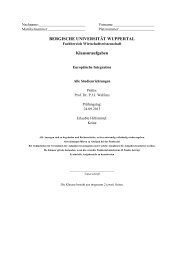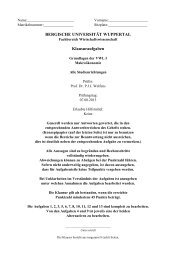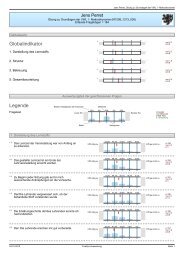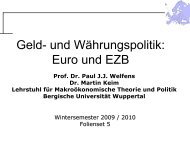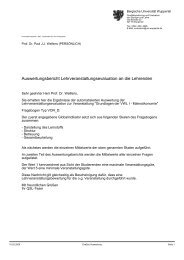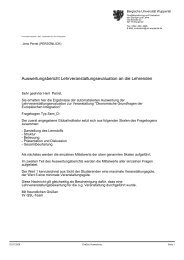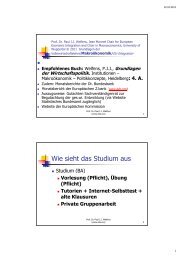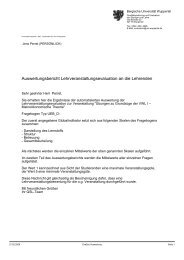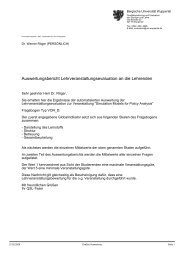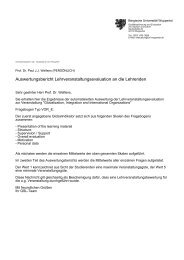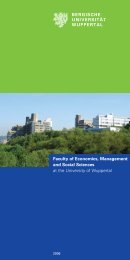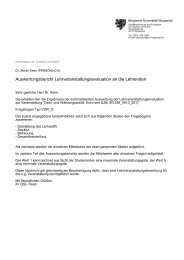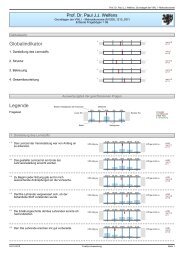UNIVERSITÄT POTSDAM - Prof. Dr. Paul JJ Welfens
UNIVERSITÄT POTSDAM - Prof. Dr. Paul JJ Welfens
UNIVERSITÄT POTSDAM - Prof. Dr. Paul JJ Welfens
Create successful ePaper yourself
Turn your PDF publications into a flip-book with our unique Google optimized e-Paper software.
efficient, indicating that the premium on government-financed R&D is smaller, but still<br />
quite large. GRILICHES / LICHTENBERG (1984) found that spillovers between academic<br />
research and some types of government R&D and the private sector exist, but<br />
they are smaller than those between firms themselves. ACS / AUDRETSCH /<br />
FELDMAN (1994) concluded that small firms (particularly high-tech start-ups) might<br />
benefit more from such spillovers. Furthermore, ADAMS (1990) found the output of<br />
the academic science base is a major contributor to productivity growth, but the time<br />
lag is approximately twenty years. The Internet creates new options for finding venture<br />
capital, and it creates enormous opportunities in international R&D cooperation.<br />
Connected to the controversy about privately or government-financed R&D are<br />
other empirical findings concerning basic research. GRILICHES (1995) presents estimation<br />
results where the basic research coefficient is highly significant and shows a<br />
rather large size. He concluded that firms which spend a larger fraction of their R&D<br />
on basic research are more productive and have a higher level of output relative to the<br />
other measured inputs, including R&D capital, and that this effect is relatively constant<br />
over time. Based on other estimation results and additional computations he concluded<br />
that the premium for basic research over the rest of R&D is 3 to 1 as far as its impact<br />
on productivity growth is concerned.<br />
Secondly, one output of the innovation process can be used as a proxy variable<br />
for technological change and innovation: patent applications or the stock of patents.<br />
Such a proceeding has several advantages. On the one hand, this indicator variable<br />
avoids a lot of technical data problems; e.g. unlike R&D stock measures, no artificial<br />
depreciation rate must be assumed; on the other hand, it also includes the results of<br />
other knowledge sources apart from explicit R&D activities. BUDD / HOBBIS (1989a)<br />
estimated for UK manufacturing long-term output elasticities with respect to a constructed<br />
stock of patents between 0.21 and 0.23. In a second paper, they estimated with<br />
a slightly different approach long-term elasticities of patenting of 0.114 for France,<br />
Germany and the United Kingdom, whereas the elasticity for Japan was 0.135 (BUDD<br />
/ HOBBIS 1989b). For the West German business sector in the period from 1960 to<br />
1990, JUNGMITTAG / WELFENS (1998) estimated an output elasticity of the real<br />
patent stock of 0.23. For a longer time period from 1960 to 1996 and with a slightly<br />
different approach, JUNGMITTAG / BLIND / GRUPP (1999) found output elasticities<br />
of the patent stock lying between 0.16 and 0.19. Altogether, these results suggest that<br />
the estimates of the output elasticities of the R&D stock and the patent stock are in<br />
most cases very similar and that they contribute substantially to economic growth. The<br />
Internet will stimulate growth in OECD countries to the extent it facilitates storage and<br />
dissemination of knowledge on the one hand; on the other hand Internet technology<br />
facilitates R&D specialization at the international level.<br />
34



